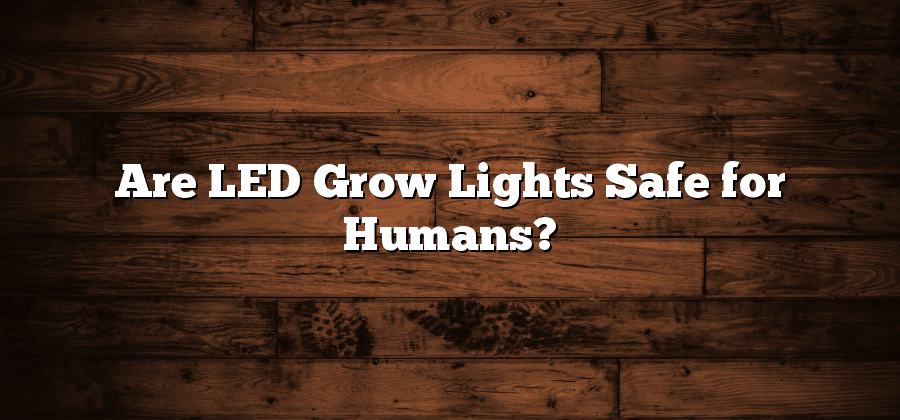The Potential Health Risks of LED Grow Lights
LED grow lights have gained popularity in indoor gardening due to their energy efficiency and ability to provide precise light wavelengths for plant growth. However, with the increasing use of these lights, concerns about their potential health risks have also emerged. One potential health risk associated with LED grow lights is their intense blue light emission. Studies have shown that exposure to blue light for prolonged periods can interfere with the body’s production of melatonin, a hormone that regulates sleep patterns. This disruption in melatonin production can lead to sleep disturbances and may increase the risk of developing sleep disorders. Additionally, the strong blue light emitted by LED grow lights is known to cause eye strain and fatigue, especially when individuals are exposed to it for long periods without protective eyewear. Studies suggest that prolonged exposure to intense blue light may contribute to the development of conditions such as dry eyes, blurred vision, and even macular degeneration. While further research is needed to fully understand the long-term effects of LED grow lights on human health, it is important for individuals using these lights to take appropriate measures to protect their eyes and ensure a healthy sleep environment.
Understanding the Effects of LED Light Exposure
LED light exposure has become increasingly prevalent in our modern society, as these energy-efficient lights are widely used in various applications, including indoor gardening with the use of LED grow lights. Understanding the effects of LED light exposure is crucial to assess its potential impact on human health.
One of the primary concerns regarding LED light exposure is its potential to disrupt the delicate balance of our circadian rhythm. Our bodies have evolved to be in harmony with the natural patterns of light and dark, and any disruption to this rhythm can have adverse effects on our health. LED lights emit higher levels of blue light, which can suppress the production of melatonin, a hormone responsible for regulating sleep and wakefulness. This disruption in melatonin production can lead to sleep disturbances and contribute to various sleep disorders.
Examining the Impact of LED Grow Lights on Human Vision
LED grow lights have become increasingly popular in indoor gardening and plant cultivation, but their potential impact on human vision is a growing concern. Research suggests that exposure to LED light, particularly blue light, emitted by these lights can have adverse effects on our eyes. Blue light has a shorter wavelength and higher energy compared to other colors on the light spectrum. Prolonged exposure to blue light can lead to digital eye strain, dryness, and blurred vision, causing discomfort and affecting overall visual health.
One of the main reasons LED grow lights are a cause for concern is their high blue light emission. Studies have shown that blue light exposure can disrupt the delicate balance of our circadian rhythm, the internal clock that regulates our sleep-wake cycle. This disruption can lead to sleep disturbances, including difficulty falling asleep and experiencing poor sleep quality. Such effects on sleep patterns can have a cascading impact on overall health and wellbeing, potentially leading to increased fatigue, decreased cognitive function, and even mood disorders. As LED grow lights become more prevalent in both commercial and residential settings, it is crucial to further investigate their impact on human vision and develop measures to mitigate the potential risks posed by these lights.
Evaluating the Influence of LED Light Spectrum on Human Health
The spectrum of light emitted by LED grow lights has been a topic of increasing interest in relation to its potential impact on human health. It is well-established that different wavelengths of light can affect the human body in various ways, including physiological, psychological, and behavioral responses. LED grow lights typically emit a narrow spectrum of light, which allows for precise control over the wavelengths used for plant growth. However, this limited spectrum raises concerns about the potential effects on human health, particularly when individuals are exposed to these lights for extended periods.
Research on the influence of LED light spectrum on human health is still in its early stages, with limited available studies specifically focusing on LED grow lights. However, existing research on other LED lighting applications, such as those used in office and residential settings, provides valuable insights. Several studies suggest that exposure to certain light wavelengths, particularly those in the blue spectrum, can disrupt the human circadian rhythm, which plays a crucial role in regulating sleep-wake cycles. Disruptions to this natural rhythm can lead to sleep disturbances, fatigue, and reduced overall well-being.
The Connection Between LED Grow Lights and Sleep Disruption
LED grow lights have gained popularity among indoor gardeners and commercial growers due to their energy efficiency and ability to mimic natural sunlight. However, recent studies have revealed a potential connection between these lights and sleep disruption. The blue light emitted by LED grow lights has a similar effect on the body as natural daylight, which can interfere with the production of melatonin – the hormone responsible for regulating sleep-wake cycles.
One study conducted by researchers at the University of California, San Francisco, found that exposure to LED light in the evening can lead to delayed sleep onset and a decrease in overall sleep quality. This can be particularly problematic for individuals who use LED grow lights in their homes or workspaces, as the high intensity and prolonged exposure to blue light can disrupt their natural sleep patterns. The disruption of these circadian rhythms not only affects the quantity of sleep, but also the quality, leading to daytime fatigue and a range of health implications.






